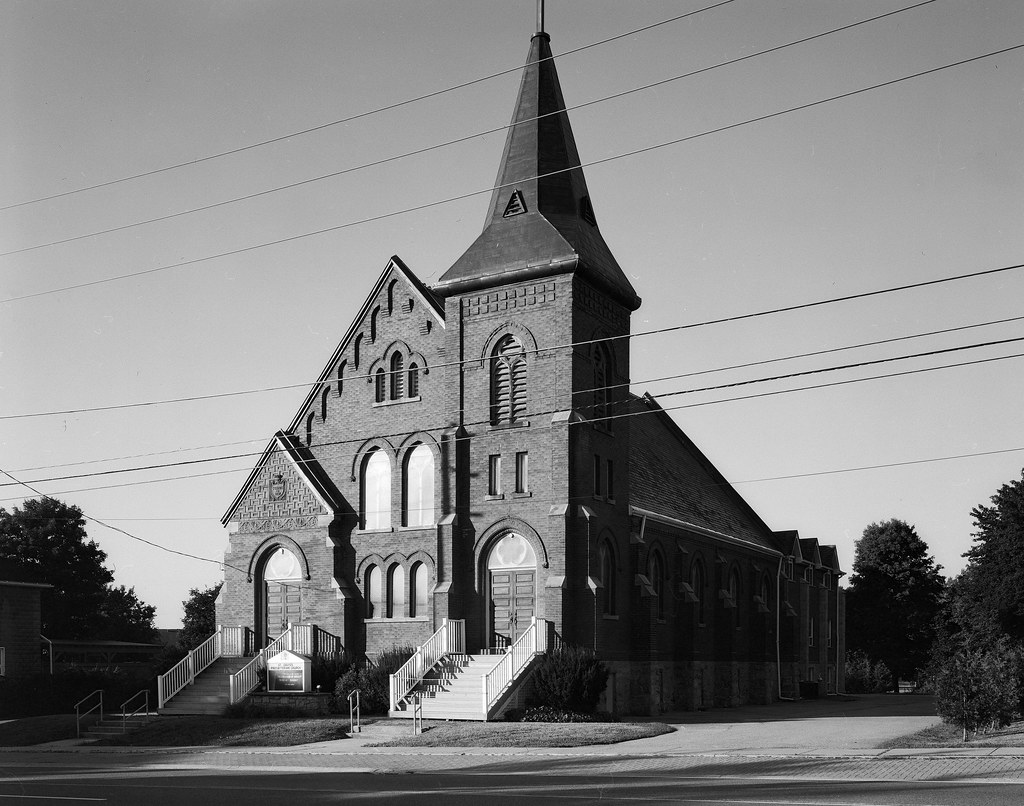Located in the historic village of Campbellville, St. David’s Presbyterian Church is unique in that its design takes from several different architectural styles and is named (after a fashion) for the person who donated the land it sits upon.

Presbyterian worship in the village of Campbellville started in 1864 when members of the Nassagaweya Congregation could not make the trek to the Nassagaweya Church in Haltonville. At this time, such a journey was a bit of an undertaking, and the area had an unsavoury reputation. The Campbellville congregation was formally recognised as a mission station of the Nassagaweya congregation in 1869 and made a two-point charge. A simple frame structure south of the current church provided a home for the small group; many families worship regularly with the Campbellville congregation to ensure its continuance. As the area grew, so did the congregation, and it became clear that a new church would soon be needed. In 1890, David A. Wheeler donated a plot of land to establish a community cemetery and a new home for the Presbyterians. Despite being a Roman Catholic, he desired to see the village expand. The congregation adopted the name of St. David’s Presbyterian Church to recognise Wheeler’s donation. Architect James A. Ellis designed the mixed-style church, taking elements from Victorian Gothic, Queen Anne Revival, and Richardson Romanesque. Brick and stone were supplied by the Ontario Brick & Terracotta Co, and volunteers undertook work from around the township. The cornerstone was laid in May 1891. The different styles blended well, with five-step buttresses, a square bell tower, decorative frize and if you look closely, even gargoyles. The interior sanctuary featured rich wooden hammer-truss beams supporting the ceiling. The new church was dedicated on 15 November 1891. A manual pump organ and electric lights were installed in the early 20th Century. When the Union vote came, the church decided to remain a part of the Presbyterian Church in 1925. An electric organ replaced the pump organ in 1950. In 1999 the church undertook a major building project that added a new rear addition. The addition added offices, a church hall, a kitchen, and Sunday school rooms. Construction of the new addition wrapped up, and the grand opening occurred in 2000. In 2004, St. David’s became a single-point charge cutting its historical ties to Nassagaweya Presbyterian Church. Structural defects came to light in 2012, with the congregation undertaking a series of projects as they became financially able. And while these projects continue, the congregation of St. David’s remains a significant part of the historic rural village of Campbellville.
I’m not too fond of electrical wires. I went across Guelph Line and used the 125mm lens, even on the other side of the major road. Sadly there was no way to compose the image without the power lines. Even cranking up the front standard, I still missed the top part of the steeple. While I did lose some of the shadow detail, the morning sun did a brilliant job showing off the front details where much of the church’s unique character can be found.
If you wish to worship with this congregation, they will be happy to welcome you! Please check out the congregational website for details on attending services worship either in-person on online streaming!
Web: stdavidscampbellville.ca
Facebook: facebook.com/stdavidspresbyterianchurchcampbellville
1 Comment